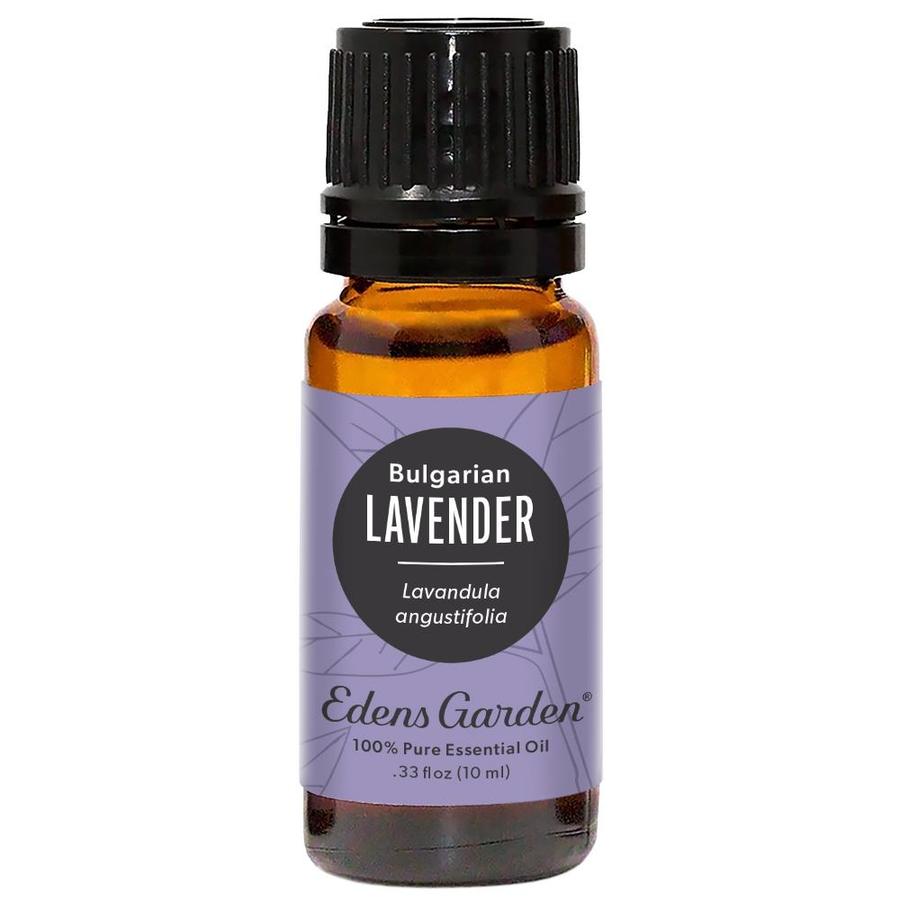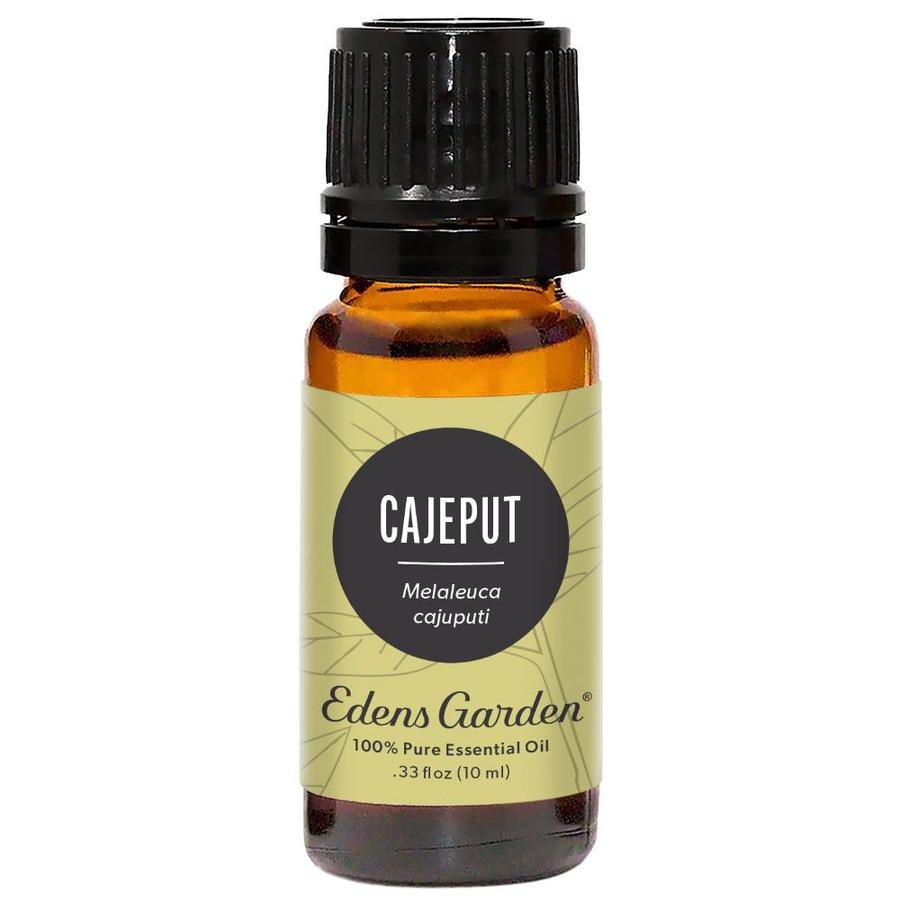The Best Essential Oils For Allergies

This content was updated for accuracy and relevance on November 11th, 2020
For some people, there is an allergy season where blossoming flowers and pollen in the air bring on a surge of coughing, sneezing, and even wheezing. Others can stop and smell the roses almost all year long until one particular tree or flower starts shedding its pollen. And still more of us are allergic to pet dander, mold, and other household allergens that persist year-round.
In short, allergies come in all shapes and sizes.
No matter their causes, allergy triggers and symptoms can be frustrating—no one wants to spend all day with a runny nose, headache, or sore throat. Did you know that essential oils can help? You may be wondering what essential oils are good for allergies and luckily, we’ve got you covered with DIY essential oil recipes to ease pesky allergy symptoms, hay fever, and more!
Lavender
With an herbaceous, sweet, floral, and fresh aroma, Lavender oil is the go-to oil for most things, including easing seasonal allergies.
Allergies are an inflammatory reaction to something in your environment. A common reaction takes the form of a stuffy nose or even skin irritation. As a result, anti-inflammatory, immune-boosting essential oils can help lessen your physiological reaction and bring relief from your allergies’ worst effects.
Because of this, Lavender is one of the best essential oils for allergies:
-
Lavender has been used in traditional and folkloric medicine for centuries for purposes, including healing skin irritation such as insect bites and soothing stress.
-
Recent studies show that Lavender has antifungal and antibacterial properties that can help reduce the immune system’s load. When there are fewer pathogens to fight, the body experiences less inflammation.
-
Lavender can also help to calm irritated skin after exposure to allergens.
In Aromatherapy: A Lifetime Guide to Healing with Essential Oils, Valerie Cooksley recommends using Lavender aromatherapy for allergy relief.
Add 5 drops of Lavender essential oil to a personal inhaler or aromatherapy diffuser, or mix with a carrier oil to apply to the skin topically.
Bonus: Eases headaches, aches, and colds. Also, when applied topically, it can help with rashes, hives and even acne.
Cajeput
While Lavender is a common culinary herb, the cajeput tree is native to Australia and Southeast Asia. Long used in traditional medicine, modern science is confirming Cajeput essential oil’s beneficial effects.-
Recent studies show that Cajeput has antibacterial properties that can help restore balance to the skin microbiome.
-
Part of the Melaleuca family of trees along with Eucalyptus oil and Tea Tree, Cajeput’s menthol-like aroma can impart a sense of expansive calm—much needed when allergies cause stress and tension.
With benefits similar to Tea Tree essential oil, Cajeput helps to relieve the breakout of skin allergies.
Add 5 drops of Cajeput essential oil to a diffuser or personal inhaler, or apply a few drops with a carrier oil like Sweet Almond or Jojoba to skin allergy breakouts.
Bonus: It will also help ease cold symptoms or aching muscles.
Helichrysum Italicum
A plant in the daisy family, helichrysum, is native to the Mediterranean. In Greek and Roman culture, it has long been used for respiratory complaints, including coughs and sore throat. In fact, the famous tisana del Quirinale tea is said to be a mixture of Helichrysum, Lavender, and Fennel.
Helichrysum-italicum essential oil has its place in history for a reason: it has strong anti-inflammatory activity.
With a slightly-sweet, musky, and herbal aroma, this oil will ease general allergies as well as runny nose and itchiness. Diffuse, place in a personal inhaler, or mix with a carrier oil and apply to skin.
Bonus: It can also help ease achy muscles, coughs, dermatitis, eczema, hives, and psoriasis.
Nerolina
Nerolina is an evergreen tree native to Australia and another member of the Melaleuca family. Nerolina has anti-inflammatory properties that make it one of the most promising pure essential oils to help with allergies:-
Its floral and slightly woody aroma can help ease sinus congestion, allergies, and cold symptoms, while relaxing and calming.
-
There is evidence that when applied topically, Nerolina can help prevent discoloration and long-term damage from oxidative stress and inflammation (perhaps including rashes).
To enjoy Nerolina’s respiratory-supporting effects, add 5 drops to a personal inhaler or essential oil diffuser.
Bonus: It can help with sleeplessness, as well as ease cramps, sore muscles, and congestion.
Roman Chamomile
Chamomile is a common tea and culinary herb that, in the aromatherapy world, comes in two primary varieties: Roman Chamomile and German Chamomile.
There’s a reason why chamomile is so common on supermarket shelves, in immunity blends, and more:-
Roman Chamomile has high antioxidant activity, which means it can help combat oxidative stress and cellular damage as a result of environmental pollutants, including secondhand smoke and some allergens.
-
Chamomile has significant antibacterial, antiviral, and antifungal properties. This might make it ideal for people with mold allergies.
-
Chamomile is also known for its calming properties. Stress takes a long-term toll on the immune system, so addressing nerves along with allergies can be especially effective.
A sweet and slightly fruity aroma with hints of herbaceousness, this oil can ease allergy symptoms while enhancing relaxation. Add 5 drops to a personal inhaler or diffuser.
If you’re having trouble falling asleep, consider adding a diffuser stocked with Chamomile essential oil to your nightstand.
Bonus: Eases migraines and asthma.
Geranium
Our Geranium essential oil is derived from flowers in the Pelargonium family, which comprises annual plants with fragrant floral buds. This variety of Geranium has long been used for respiratory tract issues, and a 2005 study demonstrated that Geranium can clear topical inflammatory rashes in mice.
Sweet, floral Geranium oil is an excellent addition to your diffuser. Add 10-15 drops to your Diamond Diffuser’s 90 ml water tank (or adjust for a different diffuser).
Bonus: It can also help even skin tone and promote calm.
Blue Tansy
Fragrant Blue Tansy essential oil is one of the more decadent, powerful essential oils available. The oil is blue in color despite it being derived from beautiful, yellow blooms. Its blue color is attributed to a component called matricin that’s naturally found in Tanacetum annuum. Matricin is clear in color but converts to a deep-blue component called chamazulene during steam distillation. Chamazulene is responsible in large part for Blue Tansy’s histaminic properties.
-
This herb has long been prized in France for its analgesic, anti-inflammatory, and anti-allergy properties.
-
Blue Tansy also demonstrates a significant antifungal and antibacterial effect.
-
Blue Tansy EO is thought to be ideal for restless nights. If your symptoms are keeping you up at night, consider adding this EO to your nighttime routine.
Bonus: It promotes relaxation and alleviates muscle soreness.
Pollen Buster Synergy Blend
Now that you know what different essential oils are good for allergies, you might be overwhelmed with all of the options. It can be difficult to know which one is best suited for your specific allergies and symptoms.
The good news is that you don’t have to choose, thanks to our pure essential oil allergy blend.Our Pollen Buster essential oil blend combines some of the most powerful essential oils for allergy relief:
-
Fir Needle (Abies sibirica)
-
Lavender (Lavandula angustifolia)
-
Rosalina (Melaleuca ericafolia)
-
Geranium (Pelargonium graveolens)
-
Blue Tansy (Tanacetum annuum)
-
Moroccan Rose (Rosa centifolia)
-
Purchase pre-diluted Roll-On essential oils to take with you on the go. When allergies act up, apply to your wrists and sternum.
-
Place 5-10 drops EO in a personal diffuser for use throughout the day.
-
Use the EO in an ultrasonic diffuser in the room or office where you spend most of your time.
-
Create your own allergy relief balm.
Tip: When you have allergies, it can be tempting to use a stronger dose of essential oils so that you can experience their aroma despite your nasal congestion. However, the goal is avoiding irritation and inflammation, so be sure to start with the recommended dilution.
Don’t worry—soon enough, your runny nose will start to clear, and you’ll experience the aroma once again, along with its anti-inflammatory effects!
Allergy Relief Balm
Have you ever used a respiratory blend like Vicks Vaporub or Tiger Balm to open your airways and provide nighttime relief? You can make your own version with just a few ingredients:
-
4 oz Fractionated Coconut oil
-
1 oz soy wax (grated or pellets)
-
6 drops of Pollen Buster Synergy Blend EO
Instructions:
-
In a double boiler, melt soy wax and add carrier oil.
-
Remove from heat and add essential oils.
-
Transfer to a glass jar.
Once cooled, use this soothing salve before bed to experience its beneficial effects as you doze off.
If you have general or seasonal allergies, it’s important to be careful about your essential oils. Any pesticides or impurities could lead to an allergic reaction—exactly the opposite of the intended effect! This is one of the many reasons why you should purchase essential oils from us. We spend countless hours researching, formulating and testing products before safely and responsibly sharing them with the Edens Garden community.
Whether you are looking for essential oils for seasonal allergies, pet allergies, a pollen allergy or another type, we've got you covered. Besides the oils listed above, some other single essential oils with anti inflammatory properties to consider are Peppermint and Lemon oil.
Sources:
- Cavanagh, H.M.A. and Wilkinson, J.M. “Biological activities of Lavender essential oil.” Phytother. Res., 16 (2002): 301-308. https://onlinelibrary.wiley.com/doi/abs/10.1002/ptr.1103?casa_token=TrevNG748woAAAAA:hifNb_cQJeRLzmdb7XKXCfxyDtdo6S5OlnMIYpWmsf7bRw6lLnOijIR5Z-46dF-qWe2LwF-4YE0wOw
- Cooksley, Valerie. Aromatherapy: A Lifetime Guide to Healing with Essential Oils. Prentice Hall: 1996.
- edlicková Z, Mottl O, Serý V. “Antibacterial properties of the Vietnamese cajeput oil and ocimum oil in combination with antibacterial agents.” Journal of Hygiene, Epidemiology, Microbiology, and Immunology 36.3 (1992): 303-309. https://europepmc.org/article/med/1293213
- Appendino, Giovanni, et al. “Helichrysum italicum.” Herbalgram 105 (2015): 34-45. http://cms.herbalgram.org/herbalgram/issue105/hg105-feat-helichrysum.html?ts=1594902909&signature=2be5fc3d9615c4f06ac977f3caf9373c
- Chao, Wen-Wen et al. “Melaleuca quinquenervia essential oil inhibits α-melanocyte-stimulating hormone-induced melanin production and oxidative stress in B16 melanoma cells.” Phytomedicine 34.15 (2017): 191-201. https://www.sciencedirect.com/science/article/abs/pii/S0944711317301137
- Chao, Sue, D. Gary Young & Craig J. Oberg. “Screening for Inhibitory Activity of Essential Oils on Selected Bacteria, Fungi and Viruses.” Journal of Essential Oil Research 12.5 (2002), 639-649, 10.1080/10412905.2000.9712177
- Maruyama, N., Sekimoto, Y., Ishibashi, H. et al. “Suppression of neutrophil accumulation in mice by cutaneous application of geranium essential oil.” Journal of Inflammation 2.1(2005). https://doi.org/10.1186/1476-9255-2-1
- Battaglia, Salvatore. Blue Tansy












Leave a comment (Comments will be approved before showing up)